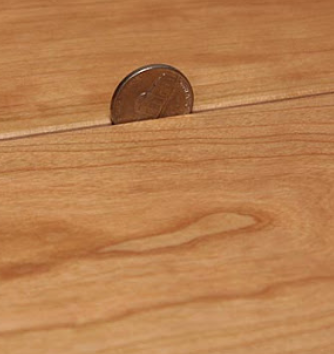Wood Selection
 Various types of wood respond contrastingly to changes in dampness. The sum wood recoils or extends in light of changes in dampness is called solidness. When in doubt of thumb, woods with higher strength will make littler gaps in light of occasional changes. Woods like red oak, hard maple and white debris, for instance, are every now and again utilized as ground surface since they have great soundness. Some extraordinary hardwoods do have higher strength and may withstand changes better, however these woods are regularly restrictively costly contrasted with household hardwoods.
Various types of wood respond contrastingly to changes in dampness. The sum wood recoils or extends in light of changes in dampness is called solidness. When in doubt of thumb, woods with higher strength will make littler gaps in light of occasional changes. Woods like red oak, hard maple and white debris, for instance, are every now and again utilized as ground surface since they have great soundness. Some extraordinary hardwoods do have higher strength and may withstand changes better, however these woods are regularly restrictively costly contrasted with household hardwoods. Adapt the Wood
The dampness substance of the wood itself can prompt hole development. This occurs in one of two different ways. In the primary situation, your wood's dampness content is excessively high on conveyance. The ground surface gets installed and the wood keeps on drying. gaps show up as the drying procedure prompts shrinkage. In the subsequent situation, your wood is excessively dry on conveyance. The installed flooring ingests dampness and attempts to grow. Since the sheets were installed without gaps, the wood strands on either side get compacted under tension. This for all time harms the strands. At the point when the wood recoils because of occasional changes, the harmed filaments don't extend as far as possible. Once more, you end up with gaps.
Keep up Steady Humidity and Temperature
Have you at any point been to a house where the front entryway sticks in the mid year, however appears to work fine in the winter? That is the manner by which stickiness and temperature influence wood. Warmth and dampness cause the wood to extend. Cold and dry make it contract. Left unchecked, this procedure of development and constriction can harm wood so seriously you'll have to supplant it. At the less extraordinary finish of the range, you'll need to manage gaps.
Establishment
Establishment is one zone where you can apply significant control as far as forestalling gaps. In case you're utilizing built wood flooring, a visual assessment should make you aware of any observable defects in the wood. Each piece should, except for grain design, be practically indistinguishable. Put aside any pieces you see that look smaller than different sheets or that look distorted. These pieces can regularly be chopped down and utilized in less obvious regions, for example, storage room floors.
While little gaps in your hardwood floor are unavoidable, you can prepare for the most noticeably awful of them. Picking a wood with high dependability and littler widths naturally lessens shrinkage and extension. Permitting the wood time to adapt at the correct dampness and temperature implies it will be installed at a more steady dampness level. Taking consideration during establishment not to utilize harmed, distorted or inadequately estimated sheets causes you abstain from making gaps yourself. Keeping up that moistness and temperature will restrain occasional development and withdrawal.

